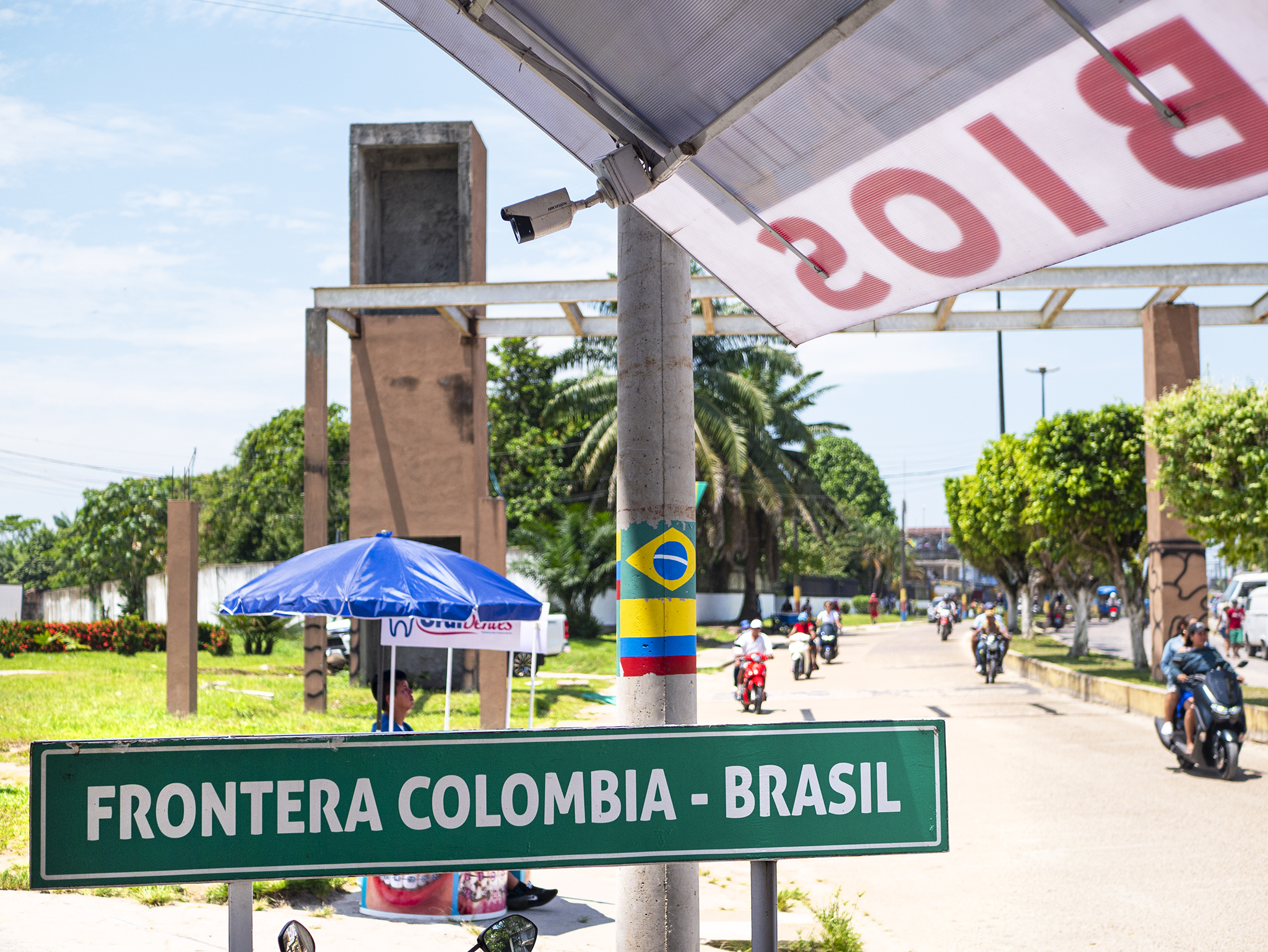There will always be something endlessly fascinating to me about physically walking across an international border. It drives home the entirely arbitrary nature of them – little more than sharp symbols of human hubris. It highlights the absurdity of the wars forged and the lives lost over their positioning. And it also sparks feelings of gratitude for the very lucky ticket I’ve received in this unfair lottery.
The Tres Fronteras mark the point in South America’s tropical jungles where Colombia, Brazil and Peru meet. On one side of the mighty Amazon river is Santa Rosa, the final stop in the northeast corner of Peru. On the other bank lies Leticia and Tabatinga – two towns that you would mistake for one if not for a faded white line on the concrete demarcating the exact spot where Brazil becomes Colombia, or vice versa, depending on which side of the line you’re standing.


The three communities form a fantastic hybrid culture. Portuguese and Spanish are universally understood, and the three currencies – Soles, Pesos and Reais – are accepted interchangeably. Indeed, the boat across the Amazon from Santa Rosa to Leticia costs 5 soles; I paid with a 20 soles note and received 5k pesos and 10 reais in change.
Each town is proud of its own nationality, but also embraces the other two. Peruvian restaurants are found in Letica, Colombian discotecas in Tababtinga, and so on. A love of football, of course, transcends all boundaries.


The region highlights so succinctly that patriotism need not necessitate exclusion. If travelling beyond the three towns, a passport stamp is required, but within them, it’s an unspoken rule that the borders remain permeable. To be able to wake up in Colombia and decide on a whim to walk to Brazil for an ice cream, stopping briefly at the border to stand with one foot in each country, was a curious novelty.
But curious novelties are exactly what borders should be. Humanity will never achieve universal equality until we create a world where every human can walk across every border. Small regions like the Tres Fronteras, and larger ones like the European Union, provide a model for a global system that we should all aspire towards.
–
Photos from the border, Leticia/Tabatinga, Colombia/Brazil


